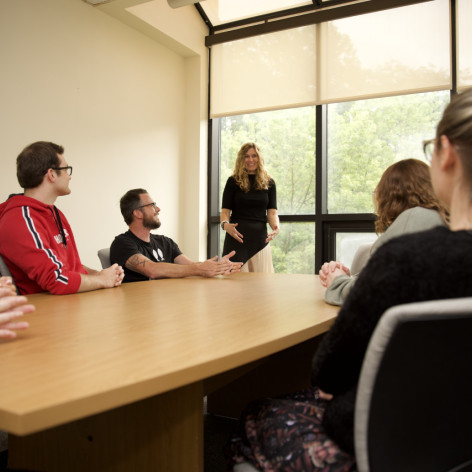A Discovery of Biblical Proportions
FOR RELEASE: Thursday, September 20, 2012
Five years ago, Dr. Mark Fairchild made the discovery of a lifetime. And his research since has continued to confirm his findings. While doing surface surveys in Turkey, Fairchild, professor and department chair of the Bible and Religion department, came upon two ancient sites in the areas of Kizkalesi (the ancient city of Korykos) and Çatiören which he believes to be remnants of ancient synagogues.
"I first discovered the synagogues during my sabbatical in Turkey in the spring of 2007. By that time, I had made several journeys in Turkey and realized that there were many known and unknown ancient cities dating back to the Greek, Hellenistic and Roman periods," he said. "I made it my goal to visit and document as many of these cities as I could find."
Through his research he has come to the conclusion that the synagogue in Kizkalesi dates back to the Roman period (around the 1st or 2nd Century A.D.) based on adjoining architecture. The Çatiören synagogue, however, more than likely dates back to the Hellenistic Period around the 1st or 2nd Century B.C. based on the polygonal masonry and a nearby inscription. If this proves to be true, it would be the earliest synagogue ever discovered anywhere in the world.
As a researcher, Fairchild conducts surface surveys of the regions and then documents his findings. Over the past 15 years, he has visited more than 200 sites and plans to continue his work in Turkey in future years. Last year, he visited 30 sites dating to the 5th and 6th centuries B.C. He documented more than 10,500 photos from his three-week trip. This summer, he continued his research of ancient sites around Turkey from Gaziantep, near the Syrian border, to the ancient city of Iconium where Konya stands today.
Through these trips, Fairchild hopes to spark interest within the archaeological community to begin excavations in this area of Turkey to uncover what other secrets it may be holding.
"In spite of the testimony of ancient authors regarding a large Jewish population in Cilicia, no ancient synagogue has ever been found in the province," he said of the region of Turkey where the two synagogues were discovered. "We know almost nothing about the churches that existed in Cilicia in that time period."
What he and other researchers suspect is that the Apostle Paul established churches in this area during the 10 years after his conversion to Christianity.
"Knowing Paul's zeal to share the Gospel message, Paul almost certainly traveled around Cilicia sharing his new faith in the cities and towns," Fairchild said. "That's why these synagogues are particularly interesting to me. There is a good chance that Paul shared the Gospel message in these synagogue cities."
After the discovery, Fairchild returned home to search for references to ancient synagogues in the area of Cilicia.
"Nobody mentions Çatiören and no scholarly literature was available," he said. "The place has never been excavated by archaeologists, and I found nothing that even referred to the site."
The only vague mention came from a journal published in 1890 by J. Theodore Bent.
"In the article, Bent described a place (for which he gives no name) which fit what I saw at Çatiören. Bent described the Hermes temple exactly as it stands today and even transcribed a Greek inscription on the side of the temple," Fairchild said. "Not surprisingly, (though), Bent never saw the synagogue or menorah."
Confident that he had made a new discovery, Fairchild continued his research. He returned to the site and found more evidence of a synagogue: a small niche that possibly held the Torah scrolls; a second story that would have been used for women or Gentiles to worship, and a water basin cut into the rock which would have been used for purification rituals.
"On my recent trip this summer, I found four more tombs with menorahs," he said of the inscriptions in the stones. "I know there are more. That's an indication of how many Jews lived in that area."
Fairchild's discovery has caused such a stir that he was invited to publish an article in the noted Biblical Archaeology Review. The article, published in June, asks the question, "Could the world's earliest known synagogue be buried amid rubble?"
"This could have profound ramifications for our understanding of the origins of the church. This discovery could also help us understand the relationships between Jews and Gentiles and the place of God-fearers," he said, explaining that relationships between Jews and Gentiles were strained during that time. "The inscription at Çatiören suggests that the Jewish community was interested in reconciliation with their Gentile neighbors."
As Fairchild explains, Paul likewise understood God's purpose of reconciling people to God and to one another. As Ephesians 2:14,16 says, "For he himself is our peace, who made both groups into one … reconciling them both in one body to God through the cross."



